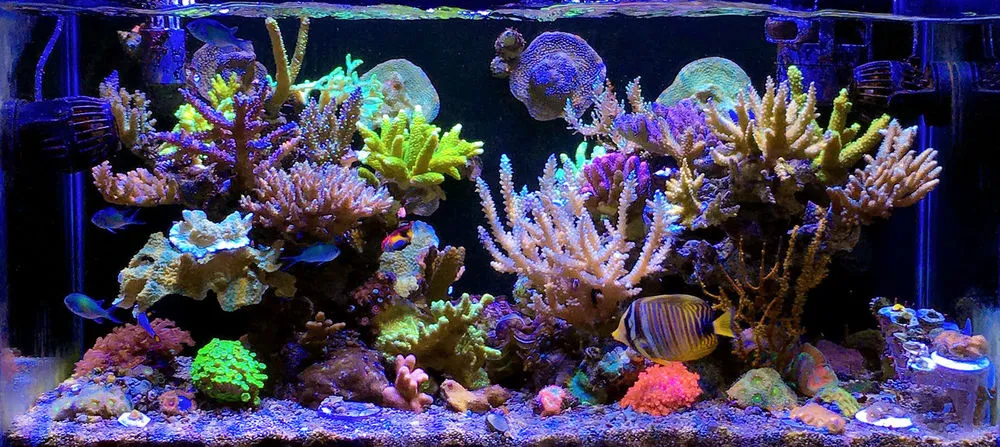Stunning 29-Gallon Reef Tank – eddy putra's TOTM | NanoReef

Tank Specifications
Volume: 29 Gallons / 92 Liters
Dimensions (L × W × H):
29.5" ×
13.8" ×
13.8"
75.0cm ×
35.0cm ×
35.0cm
Equipment List
- Salt: H2Ocean
Frequently Asked Questions
What type of lighting is recommended for an SPS dominant reef tank?
For an SPS dominant reef tank, LED lights like the Ai Hydra 26 HD are recommended. These lights provide the intensity and spectrum needed for optimal coral growth and coloration.
How can I effectively manage water parameters in my reef tank?
Regular testing of calcium (Ca), magnesium (Mg), alkalinity (Kh), potassium, and salinity is essential. Use a 2-part automated dosing system to maintain stable levels of alkalinity and calcium, ensuring you dose the correct amounts at set intervals.
What kind of filtration system should I use for a nano reef?
For a nano reef, a custom sump with a skimmer is ideal. The use of filter media like Seachem Matrix can help maintain optimal water quality. Regular changes of filter socks help in managing particulate matter.
What should my daily maintenance routine include?
Your daily maintenance routine should include dosing beneficial bacteria, carbon, iodine, strontium, and potassium. Additionally, feed your fish twice daily with quality pellets.
How often should I perform water changes, and how much water should I change?
It's recommended to perform weekly water changes of about 10%, using a high-quality salt mix like D-D H2Ocean. This helps maintain stable water conditions and dilute accumulated nutrients.
What indicative parameters should I check weekly?
Weekly, check calcium, magnesium, alkalinity, potassium, and salinity to ensure they remain within acceptable ranges for your corals and fish.
How can I effectively feed my corals?
Feeding corals can include using specialized coral food such as Reef Roids by Polyplab. It's advisable to feed them at least once a week, depending on the species' energy requirements.
What types of corals and invertebrates are suitable for a 29-gallon reef tank?
In a 29-gallon reef tank, you can keep a variety of corals, including soft corals like zoanthids, LPS like goniopora and acans, and SPS like acropora. Invertebrates such as clams, snails, and sand-sifting starfish can also thrive in such a setup.
What should I do if my ATO system fails?
If your auto top-off (ATO) system fails, resulting in a dry sump, immediately restore water levels and check your dosing system for proper functionality. It’s advisable to have a backup plan, like a reliable person to check on your tank during long absences.
How can I prevent coral loss during vacations or extended absences?
To prevent coral loss, ensure that your tank has a reliable automated dosing and ATO system. Inform a trusted friend about the tank care, providing clear instructions on the maintenance process.
What advice do you have for someone new to reefkeeping?
Read extensively about marine aquariums, ask questions, and interact with the community. Start gradually with equipment purchases; invest in what you need after thorough research. Trading corals with local hobbyists can be beneficial.
How important is community involvement in reefkeeping?
Community involvement is crucial, as it provides support, knowledge, and opportunities to trade corals. Engaging in forums and local reefing groups can greatly enhance your experience and success in the hobby.